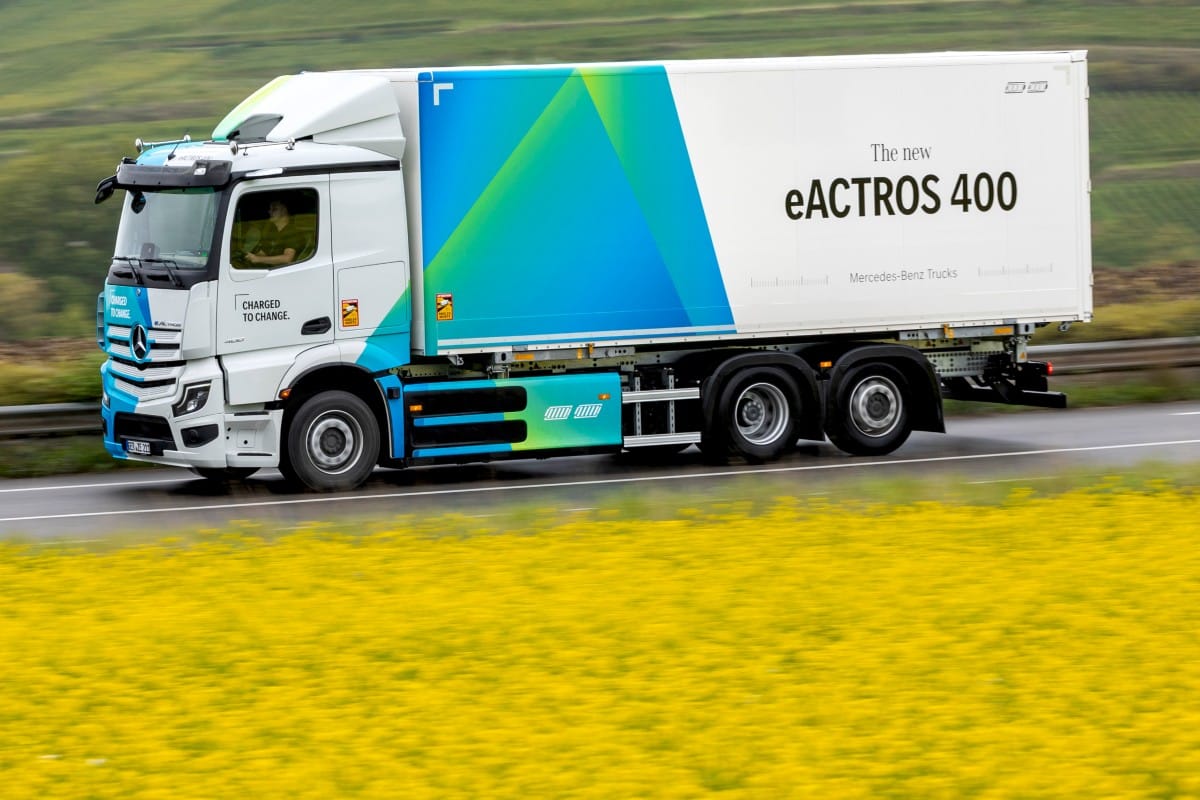
Mercedes-Benz Trucks unveils new eActros 400
When Mercedes-Benz Trucks unveiled the eActros 600 in 2024, the company had put a tremendous amount of development work behind it. The electric truck featured completely new technology and was initially only available as a tractor unit with a focus on long-haul transport. That is now changing. The variants now available were announced back in May this year and are now hitting markets this autumn as promised. These have taken the form of the eActros 400 offshoot with one less battery pack on board, an additional flatbed chassis to join the tractor units, additional wheelbases, and two different cabs. The new variants have been available to order since this week in EU30 markets and selected non-EU markets.
All versions share the technological basis of the eActros 600 with lithium iron phosphate (LFP) batteries, 800-volt on-board voltage, the newly developed electric drive axle and the Multimedia Cockpit Interactive 2. The manufacturer refers to the 600 as part of the second generation of eActros, some of whose new variants will roll off the production line at the Wörth am Rhein plant before the end of this year. At the same time, the first generation of electric trucks will be discontinued, which includes phasing out the pioneering eActros 300/400 at the end of the year. Those operating in municipal services should take note that the production of the eEconic – the variant for municipal use – remains unaffected.
Mercedes increasingly turning to the LFP path
Mercedes-Benz Trucks has been active in the electric truck market since 2021. The company’s first move here was the eActros 300/400, introduced for heavy-duty distribution transport, followed a year later by the eEconic offshoot. At the end of 2024, the new flagship eActros 600 was launched with completely new technology on board. With the eActros 300/400 being phased out at the end of the year, Mercedes is continuing to move towards LFP batteries, as the two outgoing variants still use NMC battery packs – the 300 has three on board (315 kWh), while the 400 has four packs (420 kWh). The decisive factors for the change in chemistry are the robustness of the LFP batteries and their efficacy. The manufacturer likes to emphasise that, “unlike other battery cell technologies, they can utilise over 95 per cent of their installed capacity.”
Production also differs greatly between the truck generations. The eActros 300/400 series soon to be phased out, is currently produced on the common assembly line in the German district of Wörth but has to be moved to another hall for the installation of the electric components. The eActros 600 and the newly unveiled eActros 400, on the other hand, are built entirely on a line with combustion engines, which has seen the German truck maker instituting major changes to its production line. This effort reflects the high hopes the company has for its second-generation of electric heavy-duty trucks.
Nomenclature only allowed for one new eActros 400
It was likely that the portfolio expansion would include another electric truck variant called the eActros 400. After all, the eActros 600 is named after its battery capacity of 600 kWh (621 kWh to be precise). An offshoot with only two instead of three battery packs (ergo: 414 kWh) is not only predestined for new applications, but also for the designation “eActros 400”. This is especially true since the current model with this name will expire at the end of the year and a new eArocs 400 (Arocs not Actros!) with the same battery configuration (also 414 kWh) for urban construction transport was already presented at Bauma 2025.
The choice of name was confirmed at the premiere, which took place this week in the district of Molsheim, in France. Mercedes-Benz Trucks presented the offshoot at a driving event for journalists where electrive was able to test drive the new offshoot for just under half an hour.
3 tons more payload than the eActros 600
But First, the technology: the 400 model features the same electric axle with two electric motors and the same four-speed transmission as the 600 model, delivering continuous and peak power output of 400 and 600 kW respectively. The LFP batteries with cells from CATL are also familiar. However, as only two of the three packs are installed, the eActros 400 is 1.5 tonnes lighter than the flagship 600 and therefore offers more payload: the maximum fifth-wheel load of the eActros 400 increases to 9.5 tonnes. This means, that in combination with a standard semi-trailer, the eActros 400 achieves a payload of over 25 tonnes according to the manufacturer’s specifications – three tonnes more than the eActros 600 – and thus ‘the payload level of diesel trucks’, as those
responsible emphasise. The lower payload compared to comparable diesel trucks was previously one of the points that transport companies in certain logistics sectors still struggled with in the 600 model.
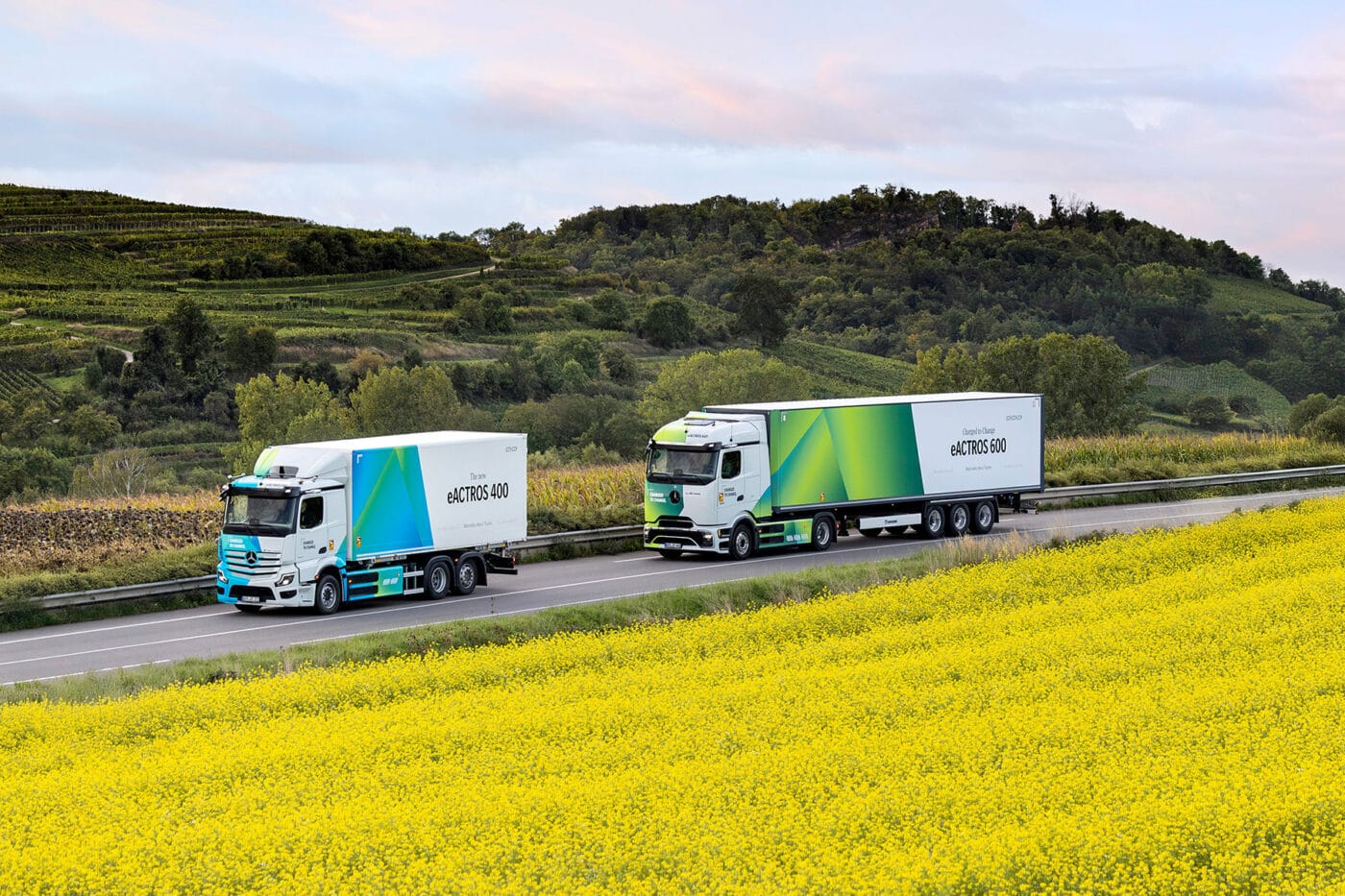
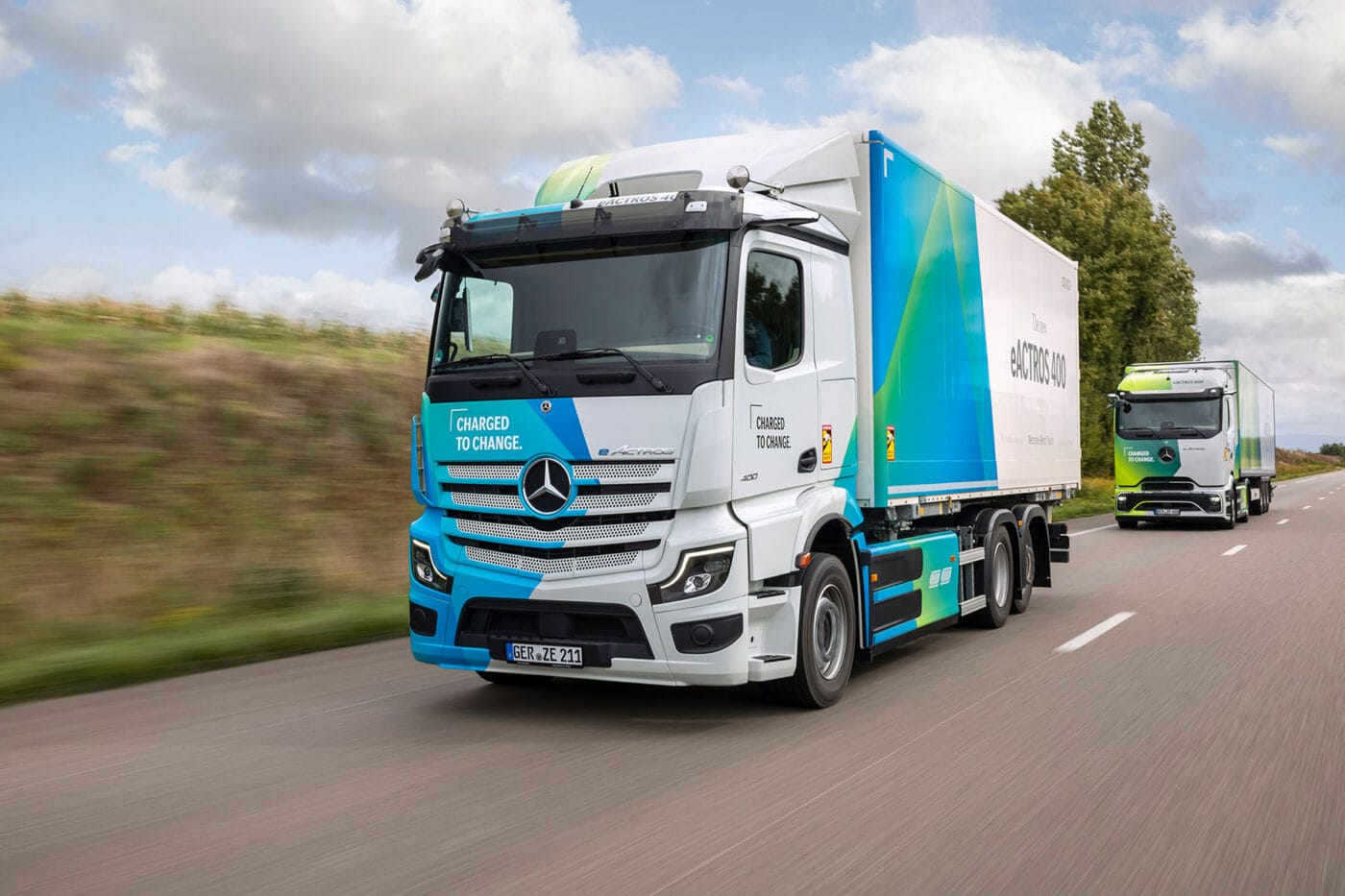
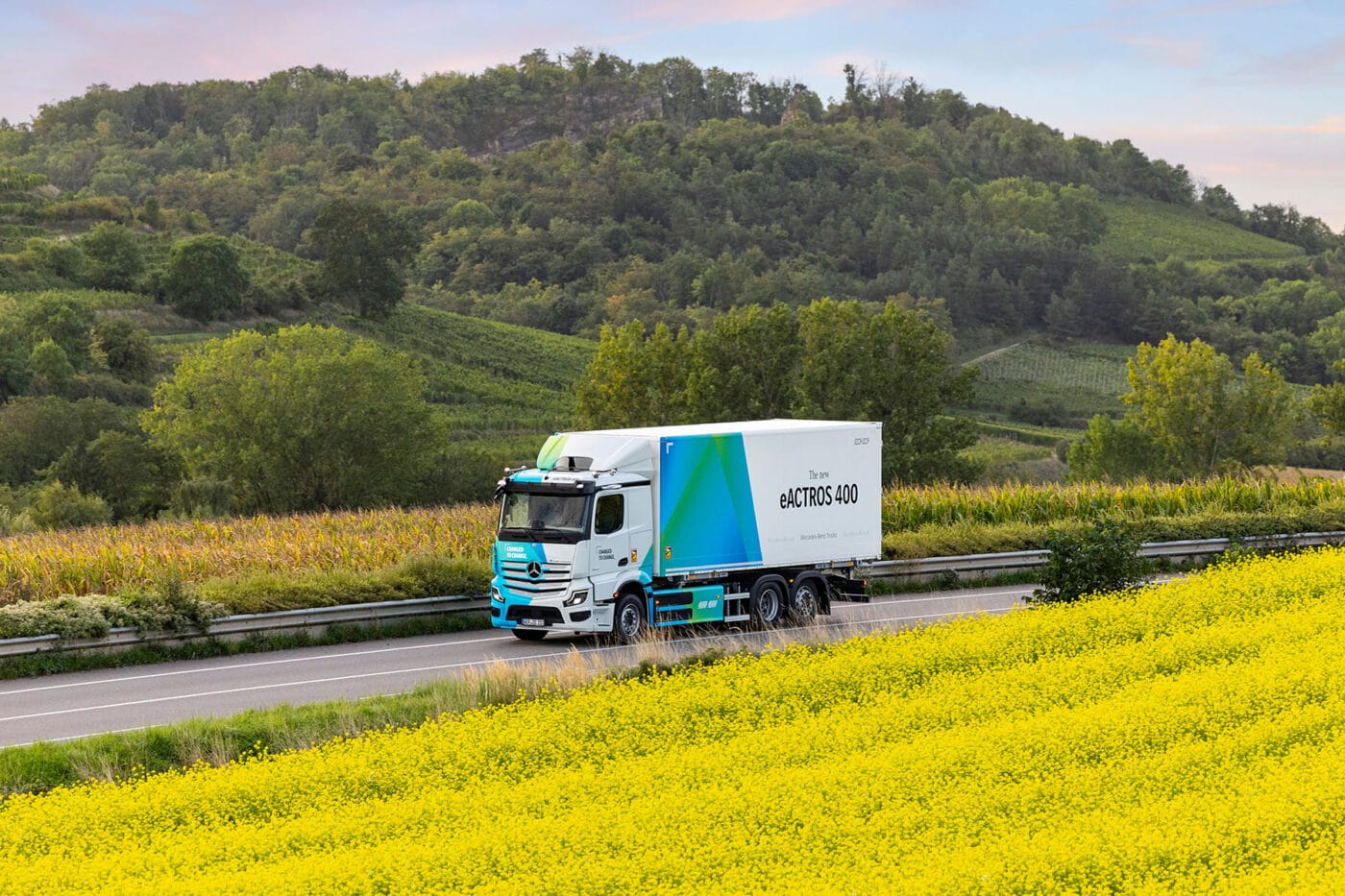
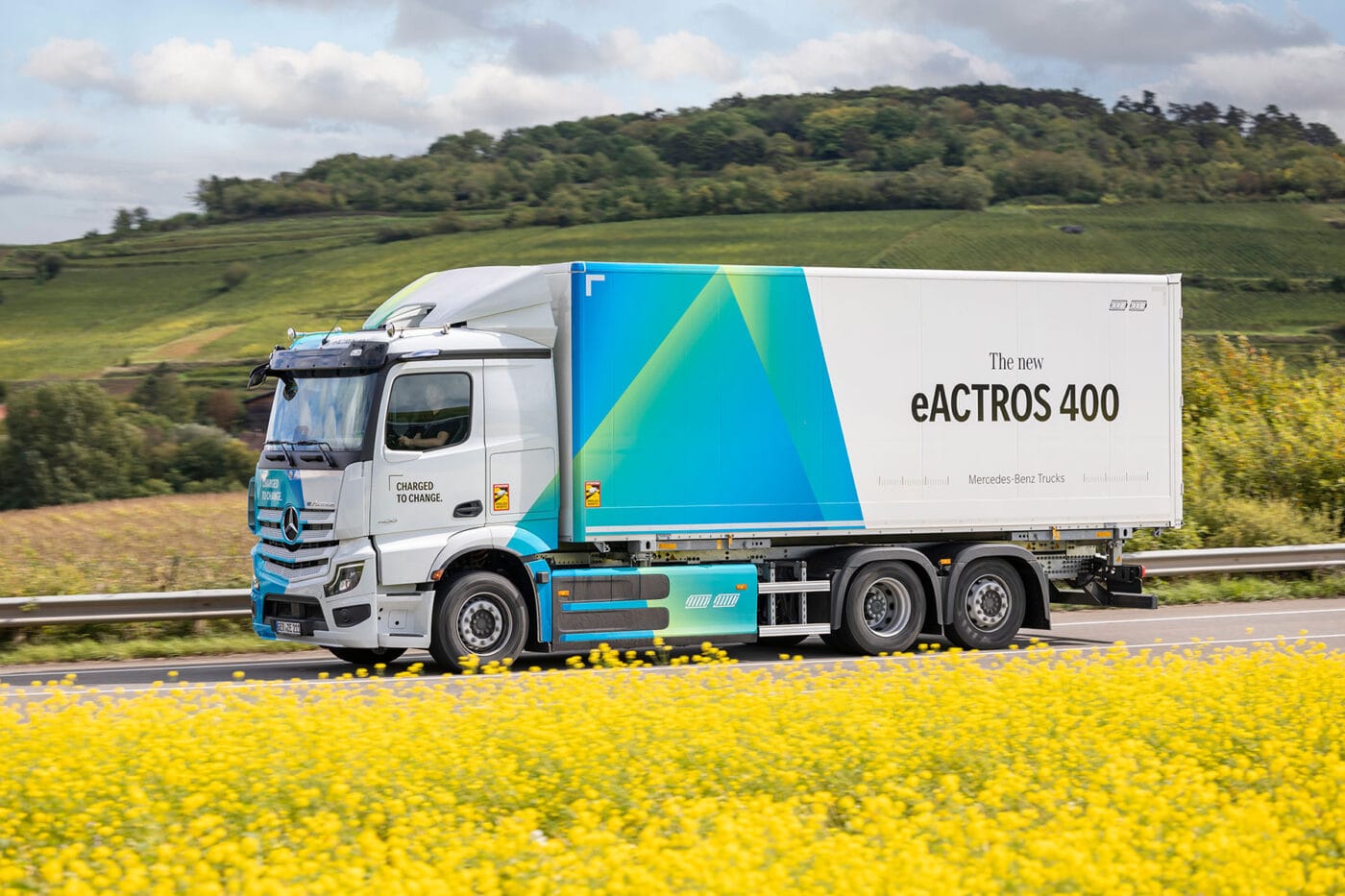
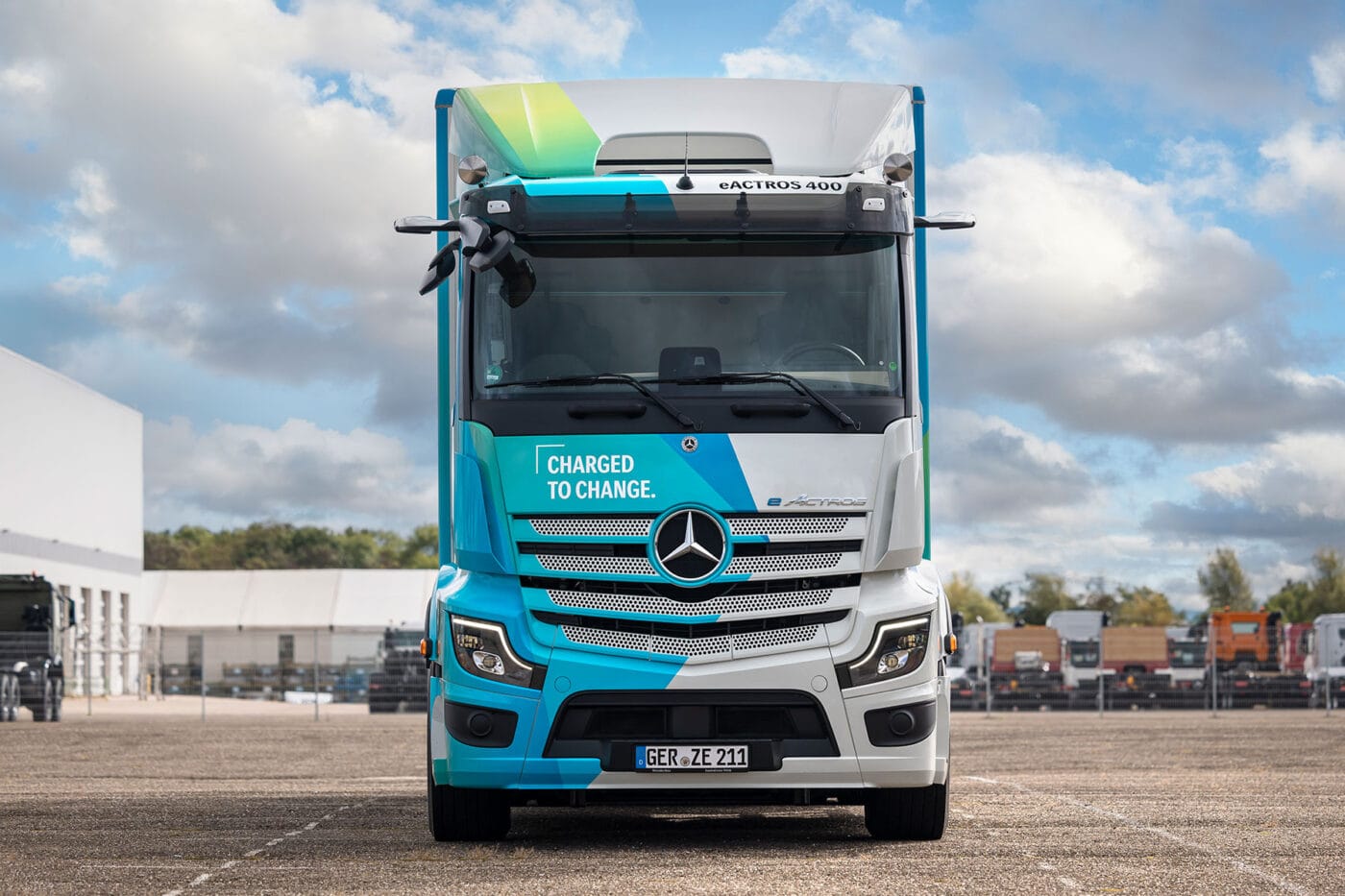
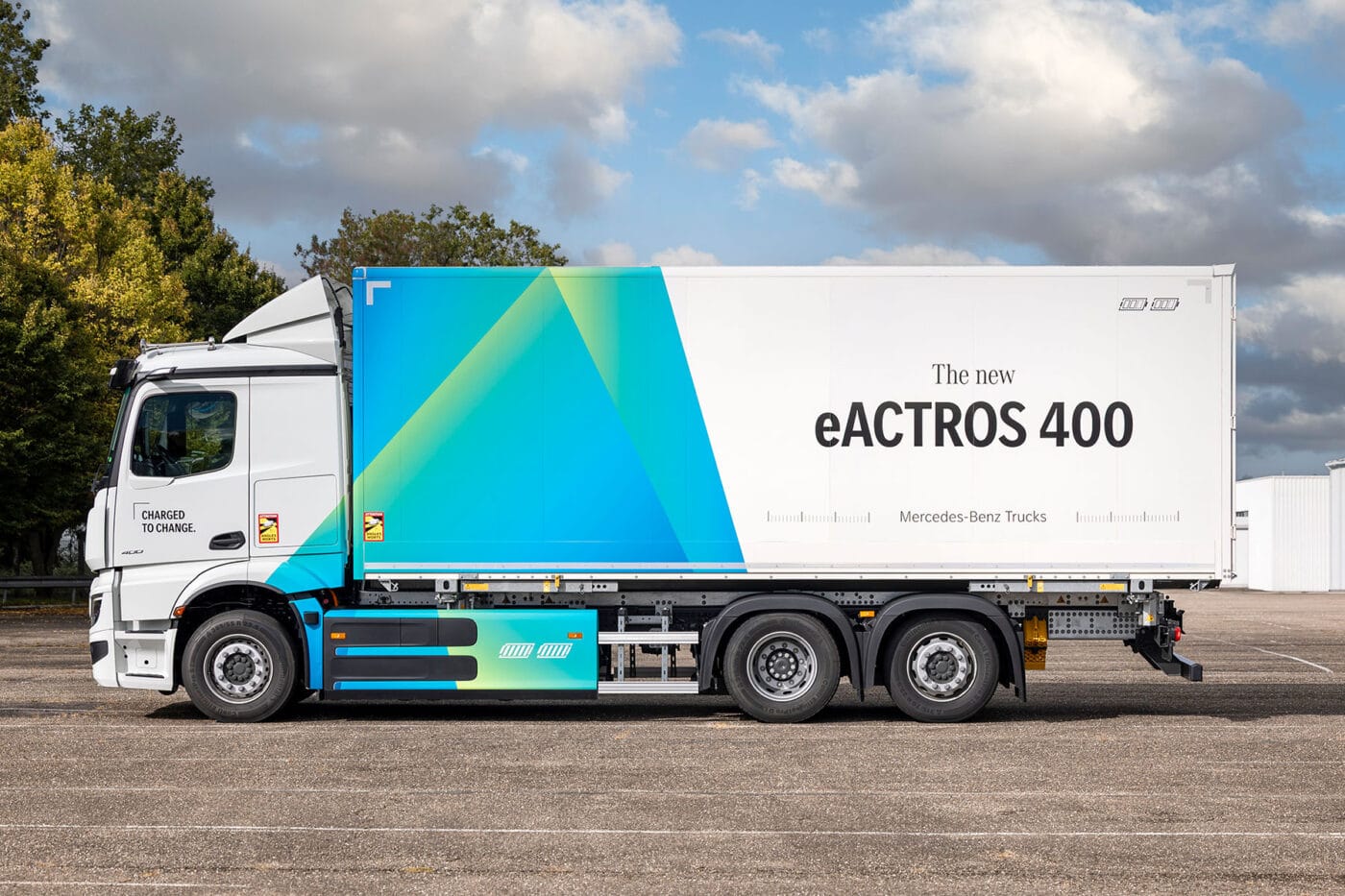
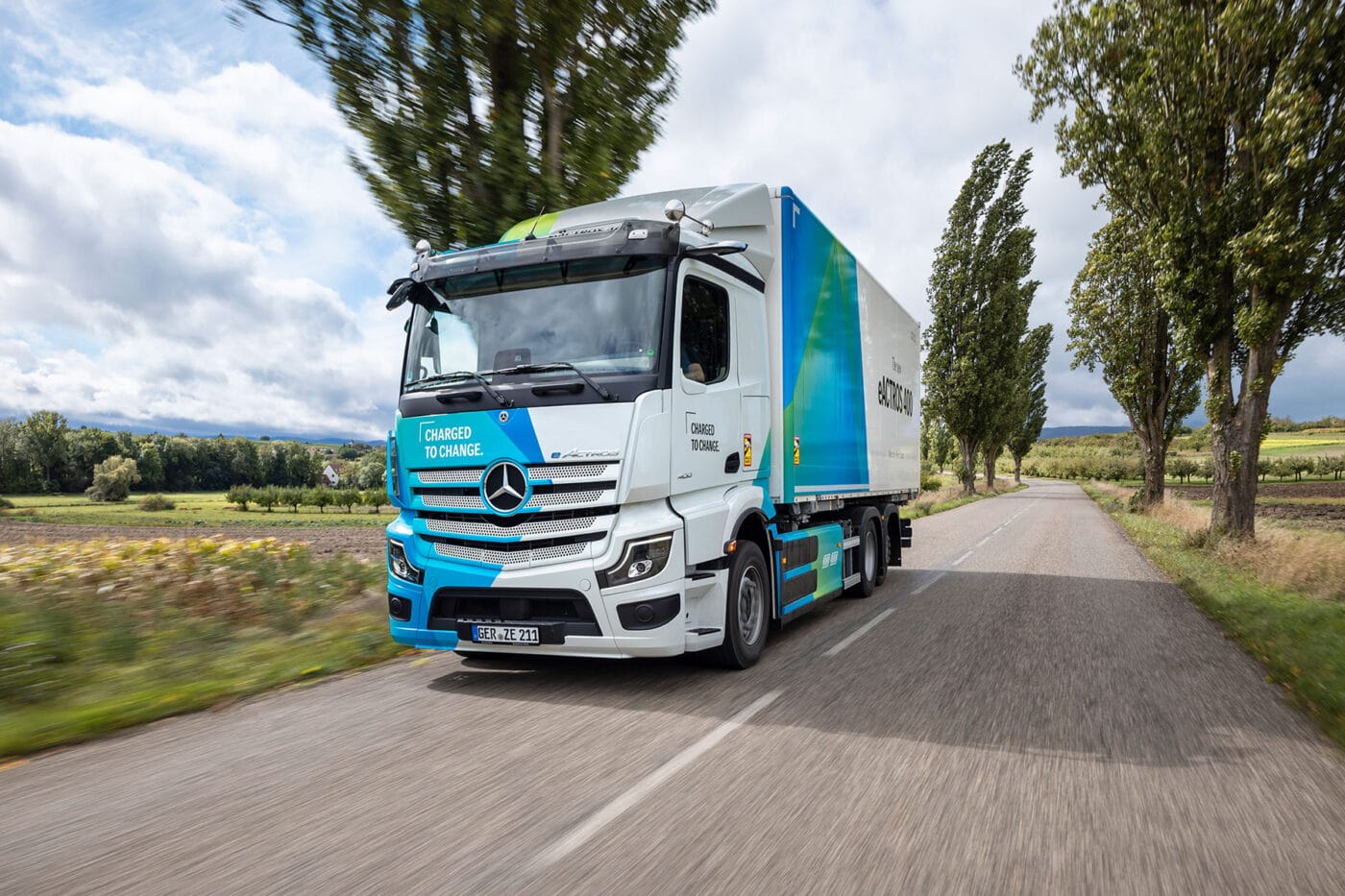
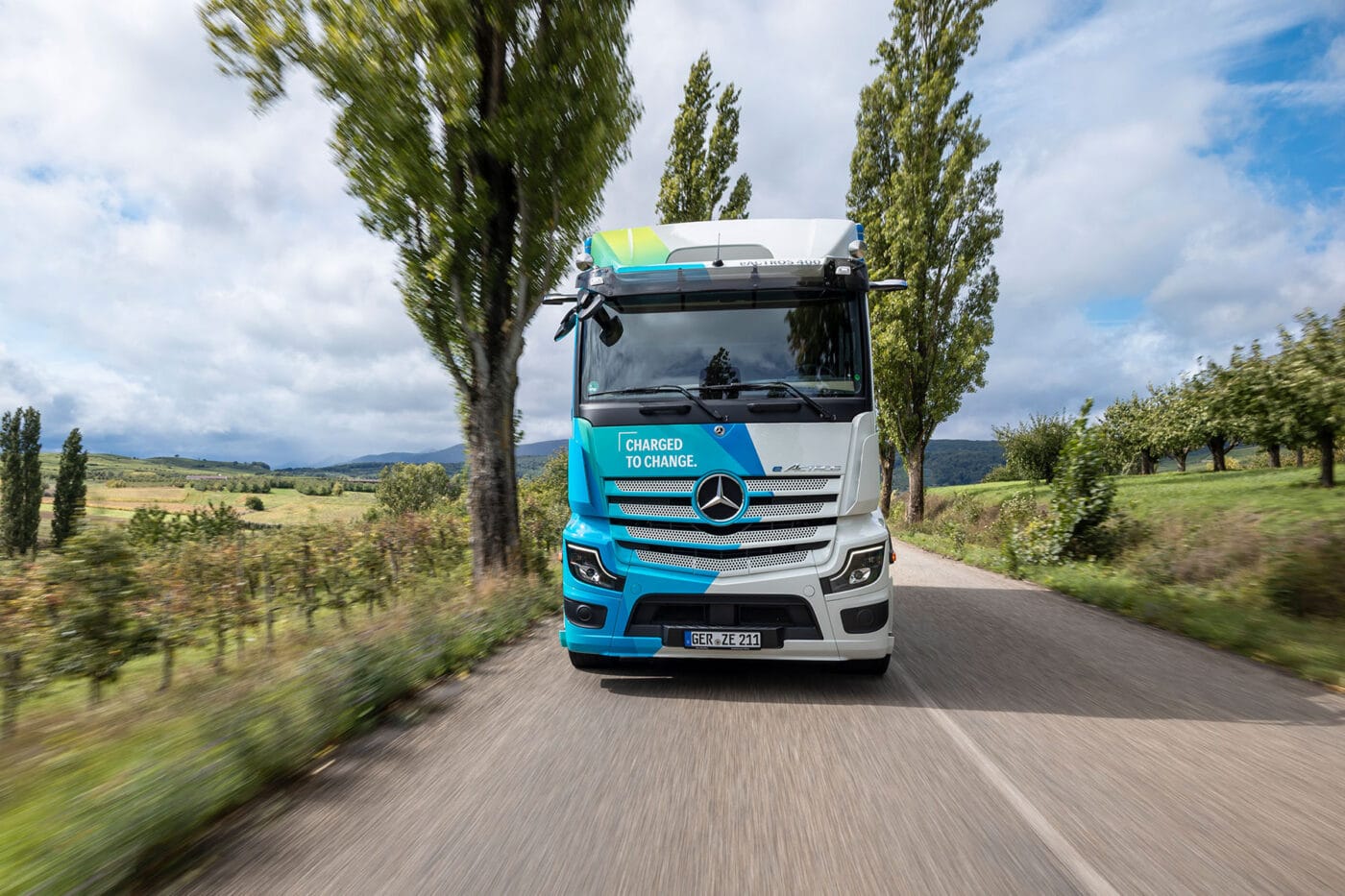
There are no surprises when it comes to charging, as the eActros 400 can be charged with the familiar 400 kW via CCS on the left-hand side of the vehicle. A second CCS charging port on the passenger side is available as an option. The new model should be able to charge from 10 to 80 percent SoC in 46 minutes with a suitably powerful charging station. Megawatt charging is not planned (initially). By way of comparison, the eActros 600 with its third battery pack takes 70 minutes to charge its larger battery using CCS. However, Mercedes-Benz Trucks will soon be offering an optional MCS port for this model.
Range depends on many factors
Let’s talk about range: Although the company states that there is no single range value due to the new variety of models, there are some examples to go by. For an eActros 400 6×2 with a dry box body, as is often used for classic heavy duty distribution transport, the Stuttgart-based company specifies a range of up to 480 kilometres – taking note that this is with a partial load and at an ideal temperature (20 degrees Celsius). Partially loaded because in distribution transport, goods being transported from warehouses are usually unloaded
halfway and the truck returns empty.
For the eActros 600, on the other hand, the manufacturer specifies the consistently stated range of 500 kilometres for continuously fully loaded vehicles in long-distance transport. For the first time, the truck maker points out that the 600 can achieve up to 560 kilometres ‘in the most fuel-efficient combination’. The company has long emphasised that the 500 kilometres is a conservative estimate and that the truck often goes further in reality, which is now being backed with a concrete figure. This is undoubtedly a response to competitors who are advertising ranges of up to 600 kilometres for their (announced) electric trucks. Incidentally, if the eActros 400 were also sent on a long-distance journey with a full load, it would achieve up to 330 kilometres. It is therefore clear that the issue of range is becoming more complex with the expansion of the portfolio. That is why Mercedes-Benz Trucks is now introducing a range calculator
with adjustable parameters on its website.
Choice of cabs and wheelbases
In addition to battery size, driving style and usage profile, the two different cabs that the company now offers for several variants of the 600 series as well as the 400 series also have an impact on distances: the L cab in the familiar Actros design with relatively low entry and exit and a width of 2.30 metres is available. Or the ProCabin with a width of 2.50 metres, a flat floor and a ‘generous feeling of space’. The former cab is slightly lighter, while the latter is more aerodynamic. In any case, the Multimedia Cockpit Interactive 2, including voice control, is standard on both. The MirrorCam, an alternative to classic exterior mirrors, remains an optional extra. In terms of wheelbases and axle configurations, the eActros 400 offers the following options:
- 4×2 tractor unit with 3,700 mm wheelbase
- 4×2 flatbed chassis with 4,000, 5,500, 5,800 and 6,100 mm wheelbases
- 6×2 flatbed chassis with six different wheelbases between 4,000 and 5,800 mm.
While the eActros 600 will now also be available in more variants, from now on, it will also be available as a 4×2 flatbed chassis with wheelbases of 4,000, 5,500 and 5,800 mm. In addition to the 4,600 and 4,900 mm wheelbases already available, there will be four further wheelbases for the 6×2 flatbed, analogous to the eActros 400 (4,000, 4,500, 5,200 and 5,800 mm).
Rainer Müller-Finkeldei, Head of Mercedes-Benz Trucks Product Engineering, explains, “We have developed the second model generation of the eActros in a consistently modular manner. […] Thanks to this modularity and the combinable options for battery capacity, cab and chassis, we offer over 40 possible combinations for the eActros base vehicle.” This includes combined variants of the eActros 600 and the eActros 400, which together form the new eActros family.
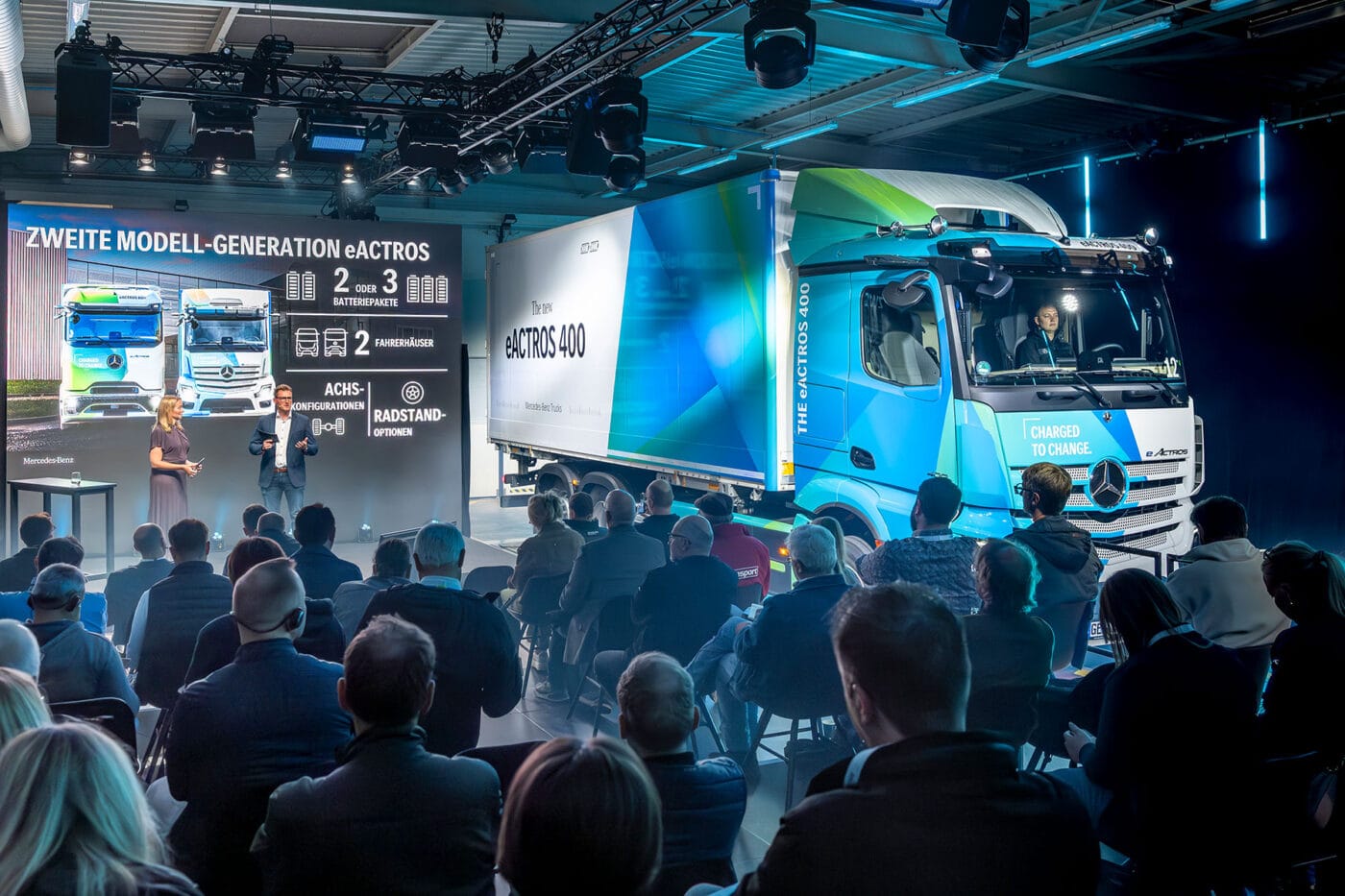
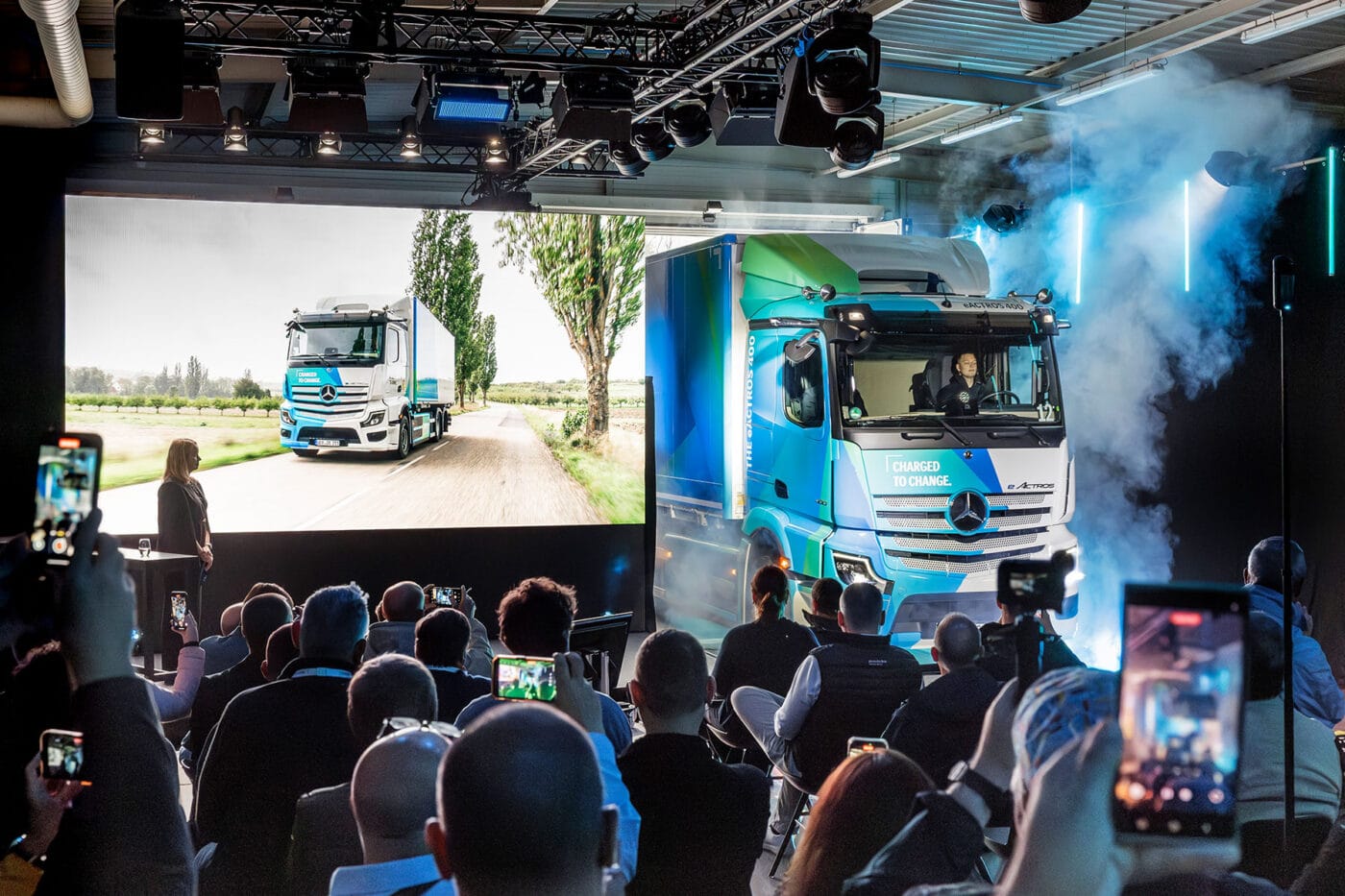
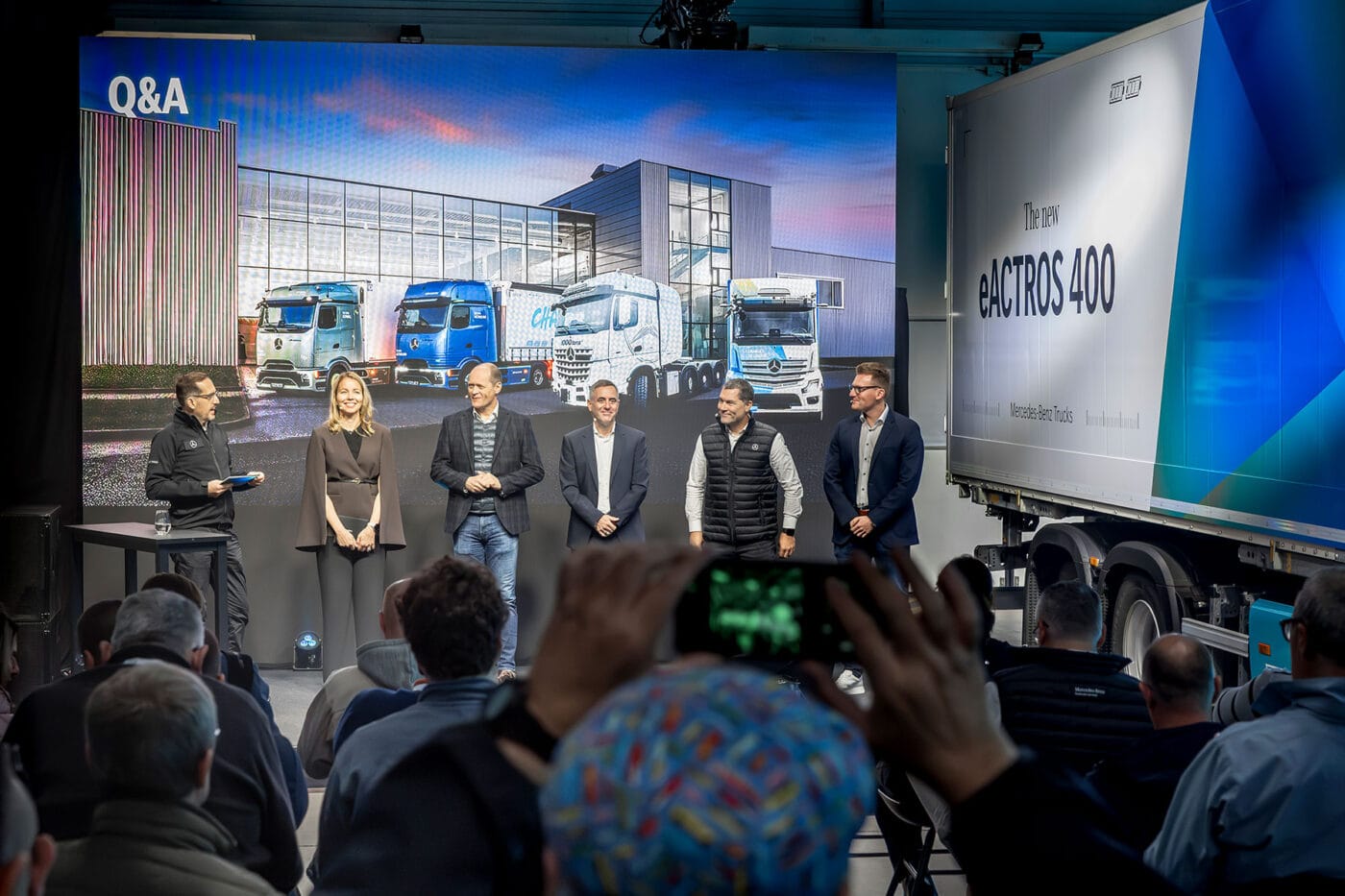
Meanwhile, Achim Puchert, CEO of Mercedes-Benz Trucks, emphasised at the vehicle premiere that his company has been actively shaping the transformation in freight transport since 2021 and delivering practical solutions, but that the transformation will only succeed if the expansion of the charging infrastructure keeps pace with the vehicles and operation is profitable for customers. “To put it bluntly, politicians must act quickly and decisively now, otherwise we European manufacturers will no longer be competitive,” he Puchert told journalists. The registration statistics show that Mercedes-Benz Trucks is prepared to take the lead and move forward in the industry. Puchert points out that his company was the leader in registrations of heavy-duty electric trucks in the European Union (EU-30) in the second quarter of 2025 and that in August, almost every second new heavy-duty electric truck in the EU was an electric truck with the
Mercedes-Benz star. Even so, it’s no secret that the young market itself is still quite small.
First impressions of driving the newcomer
The eActros 400 is set to take the statistics to new heights when production starts in Wörth at the end of the year. electrive was able to test the electric truck this week on a short 26-kilometre route from Molsheim. We were provided with an electric 4×2 tractor unit with L cab that had only travelled 588 kilometres in its lifetime – and a driver. The trailer was loaded up with mesh boxes filled with stones, bringing our total weight to 41 tonnes – because anything worth doing, is worth doing properly.
We whirred smoothly and quietly from the factory premises onto the road. We were familiar with the cockpit from the eActros 600. The new offshoot also offers
five recuperation levels and three driving modes. In the ‘Economy’ mode and
recuperation level 2, we weave our way unobtrusively through the traffic on country roads. The truck also has a boost function familiar from the 600 that allows a temporary increase in power from 400 to 600 kW. This allows the truck to accelerate when it threatens to slow down flowing traffic. The advantage of this boost, if used frequently comes at the cost of a noticeable effect on the battery indicator. We limited ourselves to just one ‘short truck sprint’.
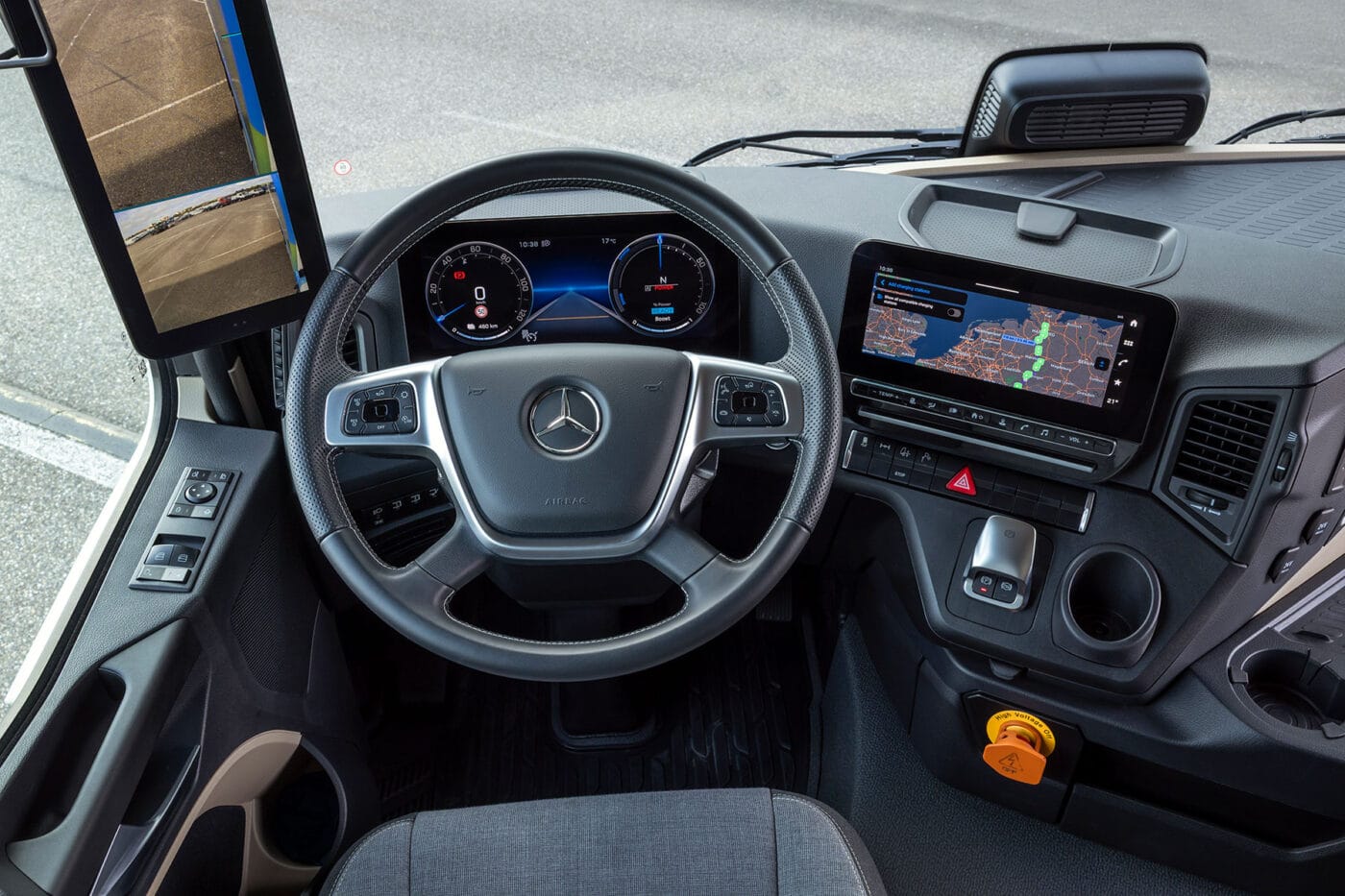
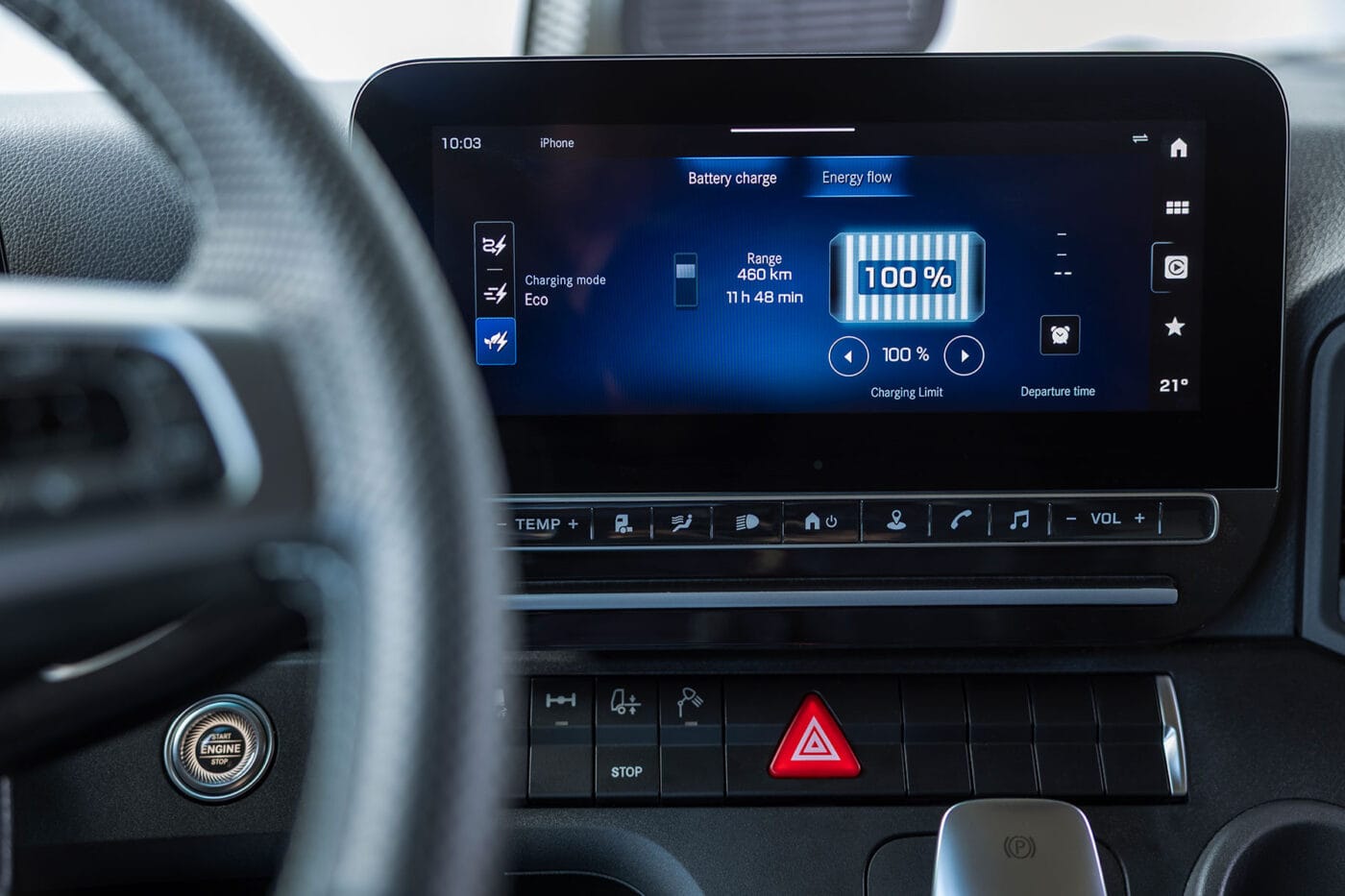
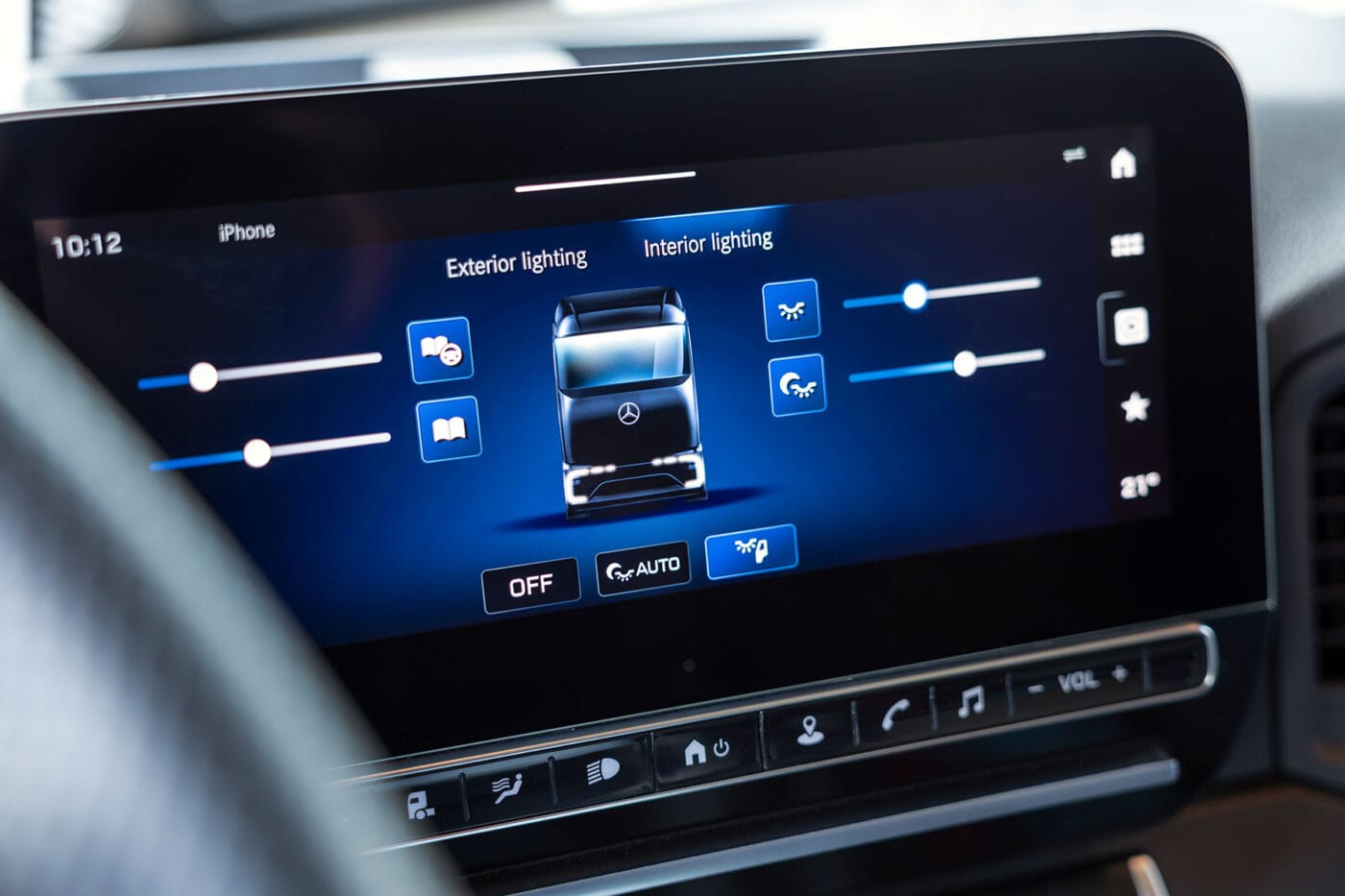
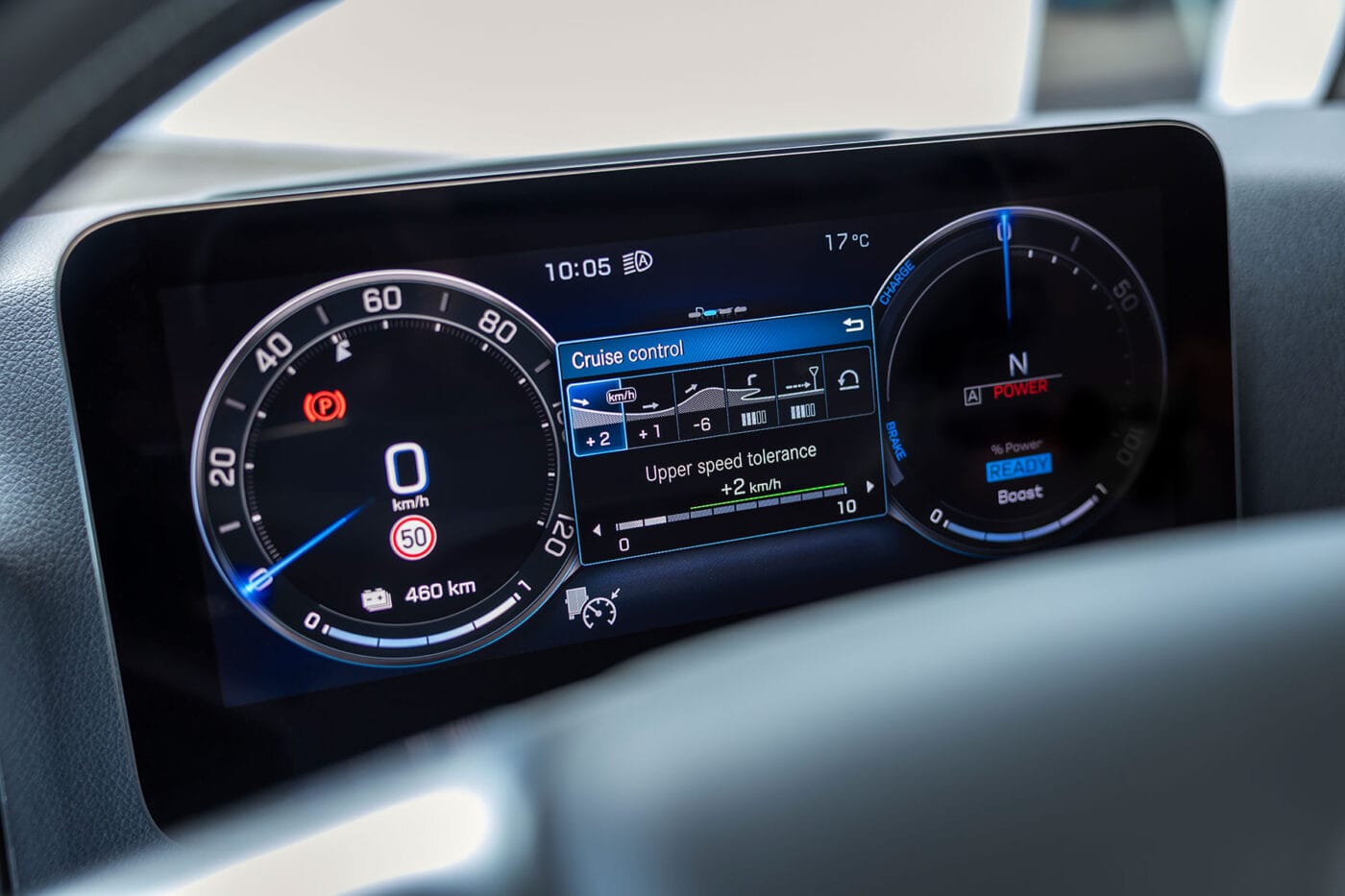
The voice control system, now standard, responds to a “Hey Mercedes” and the request to set the cabin temperature to 22 degrees, while the MirrorCam warns us at least half a dozen times in 25 minutes about cars in our blind spot. Without vibrations and with plenty of power, we make it out of every roundabout, which there are plenty in France. With a mileage of 616 kilometres, we arrive back at the factory premises in Molsheim. The battery charge level has dropped from 58 per cent and a left range of 175 kilometres to exactly 50 per cent and a range of 155 kilometres. The conditions were almost ideal at 21 degrees Celsius.
The manufacturer points out that the new eActros models offer significant CO2 savings over their life cycles compared to comparable Actros models with diesel engines. Based on the average EU electricity mix, CO2 emissions are expected to be reduced by 40 per cent within ten years, and by more than 80 per cent when using electricity from renewable energies.
This article by Cora Werwitzke was published simultaneously on our German platform electrive.net. Carrie Hampel translated the text.

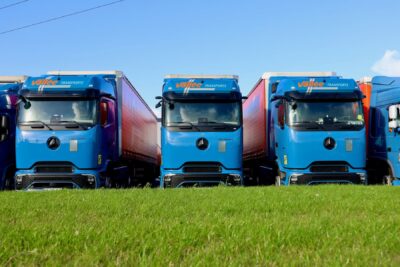
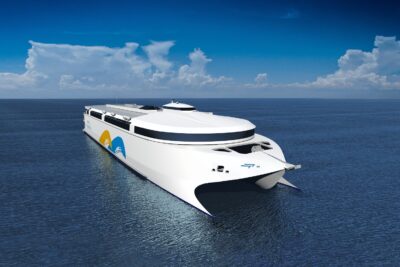
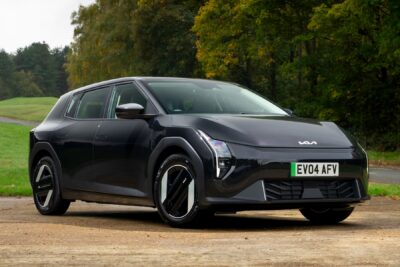
0 Comments